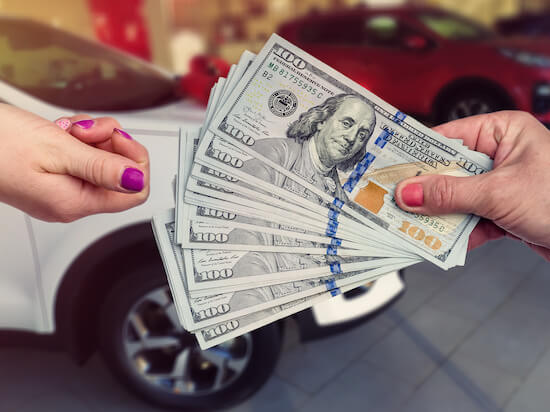Can I Trade My Car in if Im Upside Down
2375 views
- If your car is worth less than what you still owe, you have a negative equity car aka being "upside-down"
- The average term length for a car loan of a new vehicle in the U.S. is 69 months
- A car dealership is not really paying off your loan when you trade it in, you are since it's rolled into your new loan
- Trading in your vehicle means you'll be paying for two vehicles; one you own and one you no longer own
These days, the average term length for an auto loan of a new vehicle is almost six year, 69 months to be more precise. But, most auto loans are available in one-year increments that can last anywhere from two to eight years.
Use eTags© to Quickly Complete Your DMV Service. Renewals, Title Transfers and More, All Online!
In 2019, the average term length for a used car was 65 months
Since car loans last longer, so does the number of car buyers who trade in their vehicle while still owning more money than the car is actually worth. That's what people in the automotive industry call negative equity. In layman's terms; being upside down on a vehicle. You owe more on the loan than what the car is worth at the time you want to trade it in.
SEE ALSO: 3 THINGS TO CONSIDER WHEN BUYING A LUXURY CAR
What is negative equity
Say you financed a Hyundai Tucson SUV in 2016 for the original MSRP of $25,000, but you'd like to trade it in this year to get a newer model. In 2020, the market value or trade-in value for this SUV is $18,000, but you still owe 21,000 on it. The negative equity is $3,000. You decide you're still interested in a newer vehicle, so you walk into a car dealership and start negotiating your trade-in.
The dealership is not really paying off your loan, you are
The dealer will pay off your remaining loan amount, but roll in that same amount into your new loan…for your new vehicle. You can expect higher monthly payments or choose to extend the length of time on your loan to have smaller payments. This results in paying more interest on the vehicle, since now your new loan is stretched out.

So the truth is that the car dealership is not really paying off your loan, since that amount comes back to you, it's just now on your new car loan. In other words, you have to pay the difference between the loan balance and the trade-in value. Even when the transaction doesn't involve rolling it into your new loan, you may be asked to pay cash for the remaining amount you owe on your trade-in.
SEE ALSO: BUYING A CAR? SPOT THE BAD CAR SALESPERSON
Trading in your car means you'll be paying for two vehicles; one you own and one you no longer own
Negotiate and negotiate some more
To get an overall good deal, try to get a good interest rate on your new loan and a fair price for both the trade-in and the new vehicle you have your eyes on. Before you walk into a dealership, look online for an auto loan calculator to get an idea of what your next car payments will be.

What the financial experts are saying
If your current car loan is at a higher interest rate than the rate you can get for a newer car model, then it may worth trading it in because you'll be saving money. Trading in a more expensive vehicle and buying a newer, cheaper model, can also decrease your car debt. But, if that's not the case, then keeping your current vehicle until you've fully paid off your car loan or at least until it no longer has that negative equity is your best bet.
Can I Trade My Car in if Im Upside Down
Source: https://www.etags.com/blog/the-truth-behind-trading-in-a-vehicle-with-negative-equity-being-upside-down/